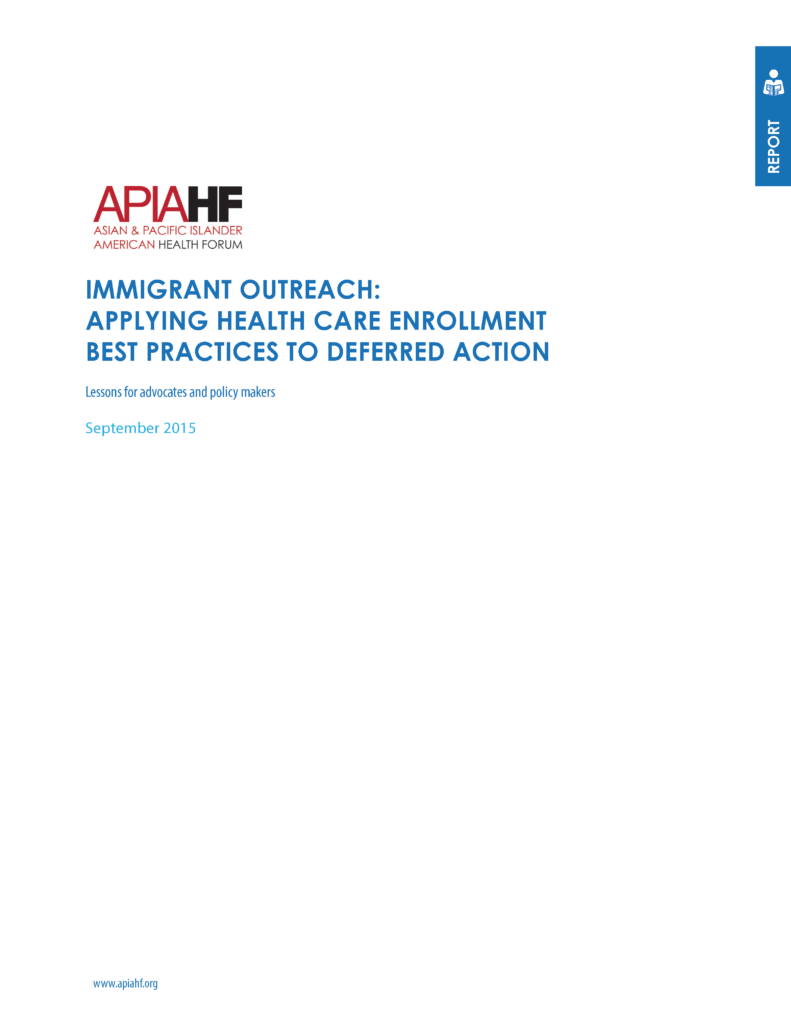Executive Summary
More than 630,000 Asian Americans and Pacific Islander (AAPIs) immigrants may be eligible to apply for new deferred action programs created by the Obama Administration, known as Deferred Action For Childhood Arrivals (DACA), expanded DACA (DACA+) and Deferred Action for Parents of Americans (DAPA).1 Despite the large number of AAPIs eligible for relief, AAPI candidates from Korea, Philippines, China and India have the lowest application rates among the top 10 countries of origin for DACA, the only one of President Obama’s new programs to be implemented.2 The programs offer deferred action from immigration proceedings for qualified undocumented immigrants who came to the
United States as children or are parents of U.S. citizens or lawful permanent residents (LPRs). Under the policies, beneficiaries are given temporary protection from removal proceedings and renewable work authorization. While DACA was implemented in August 2015, the newer programs, DACA+ that removes age limits for DACA candidates and DAPA, intended for undocumented parents of U.S. citizens and LPRs, are on hold pending federal litigation.
Current DACA beneficiaries show the positive power and potential of deferred action programs. DACA recipients have obtained new jobs and increased their earnings, obtained internships and drivers’licenses, opened bank accounts and credit cards, achieved educational goals, and other increased opportunities that allow them to more fully settle and integrate into their communities. In the area of health, DACA beneficiaries now have increased access to affordable health care from college enrollment, new employment-based plans and some state-based programs for low-income residents.
Meanwhile, insight gained during the first two Affordable Care Act (ACA) open enrollment periods provide valuable lessons for advocates and policy makers as they seek to maximize applications for the new deferred action programs and promote greater integration by immigrants into their communities.3 This report provides an overview of the barriers that AAPI youth and their families face in applying for new government programs, whether in the immigration or heath care spheres. Identified barriers include concerns about negative government interference, impact that applications would have on their future legal status or that of family members, cultural barriers and confusion based on information and interviews with community-based organizations (CBOs) that conduct outreach and education or offer application assistance for the DACA program and, or ACA Health Insurance Marketplaces. In addition this report points to lessons and policy changes to overcome these challenges such as engaging AAPIs, building partnerships, addressing language and cultural barriers and championing AAPI voices to fully support integration and economic opportunity for AAPI undocumented immigrants.

